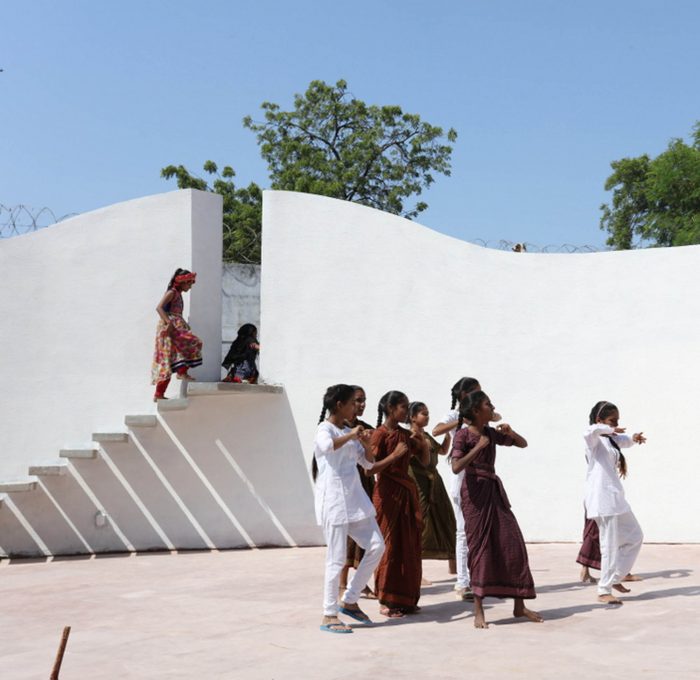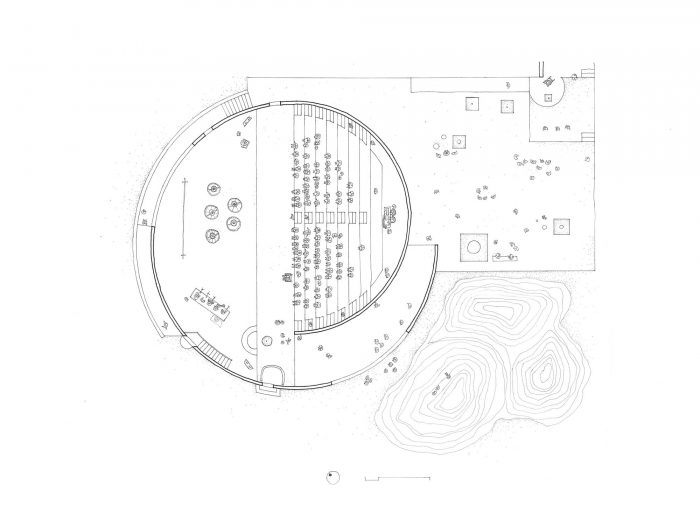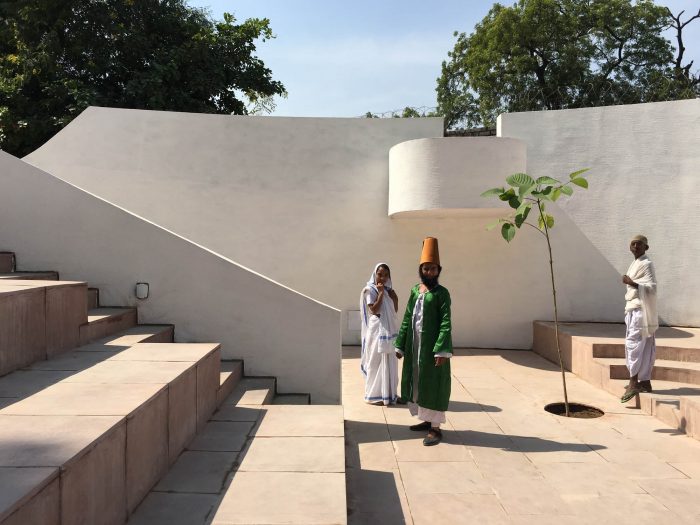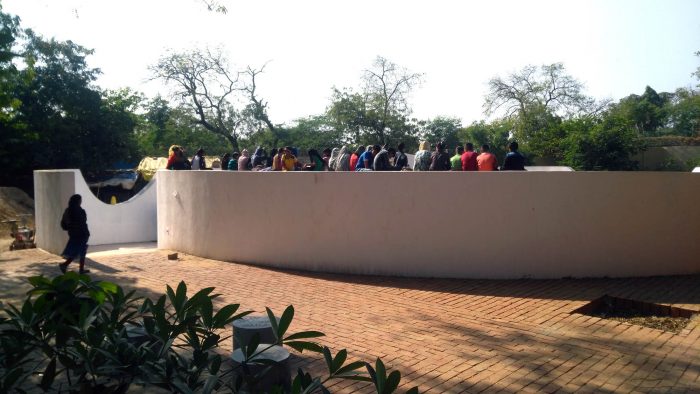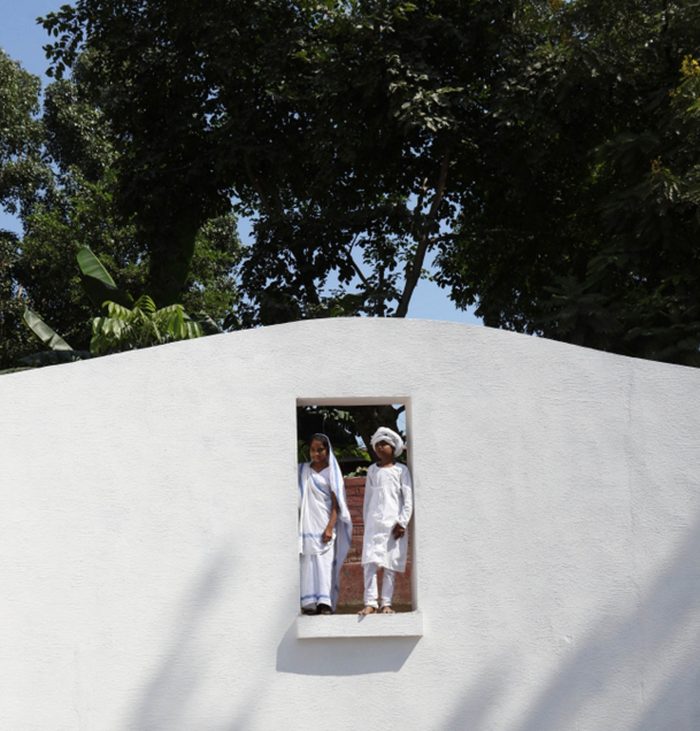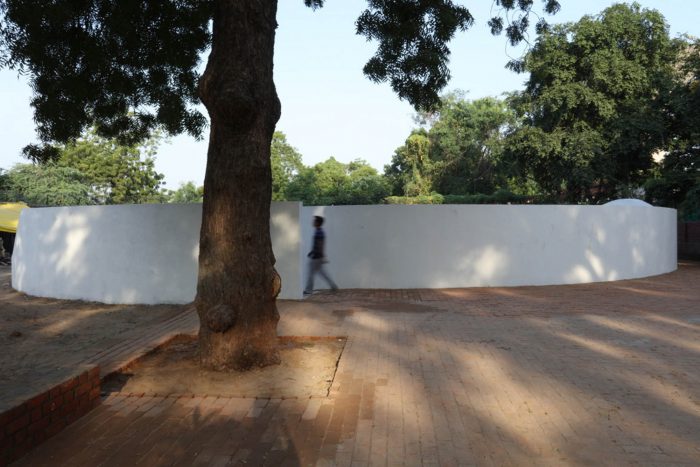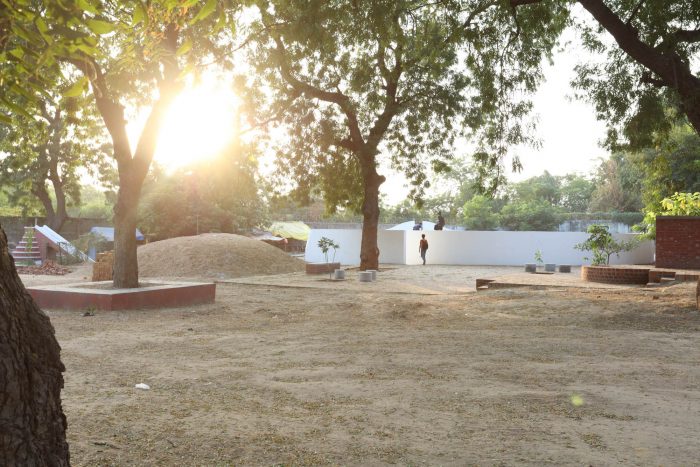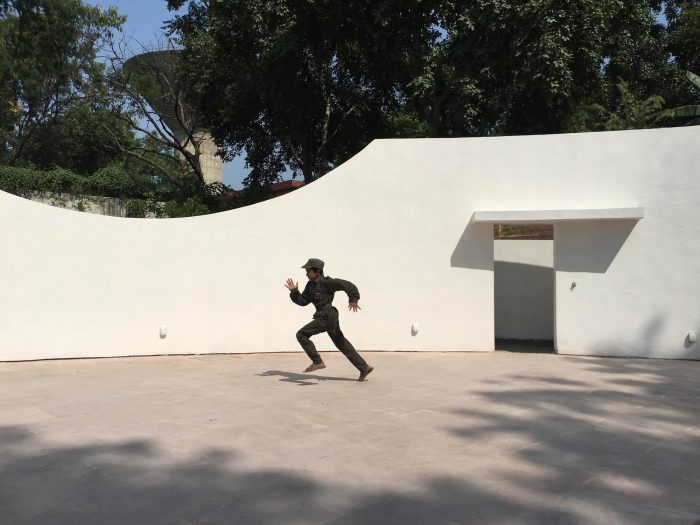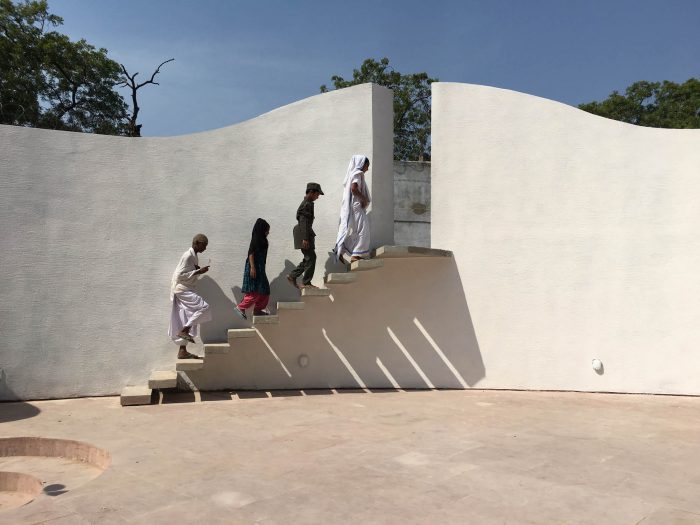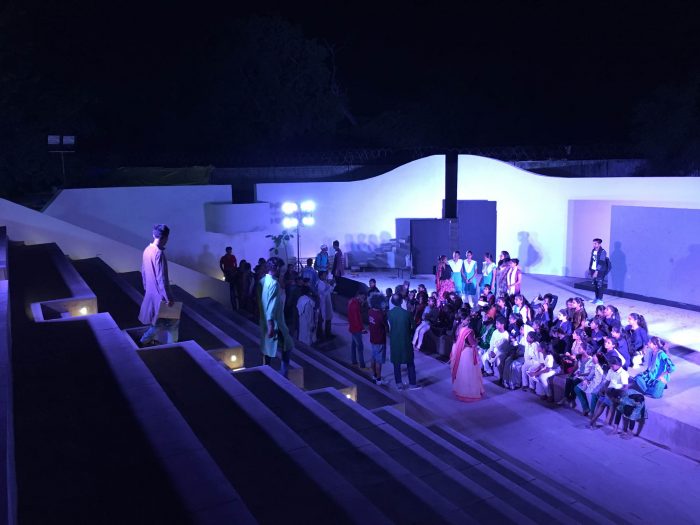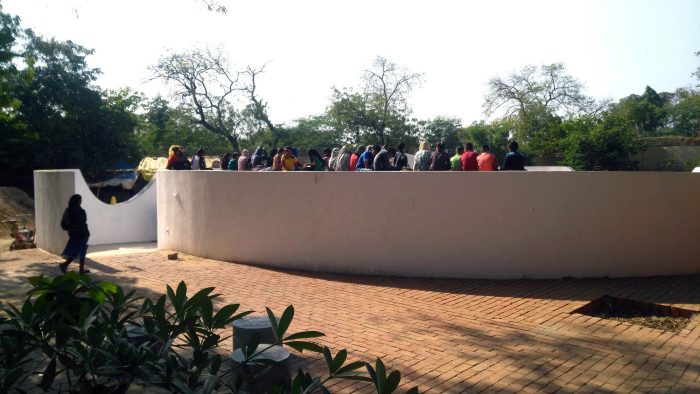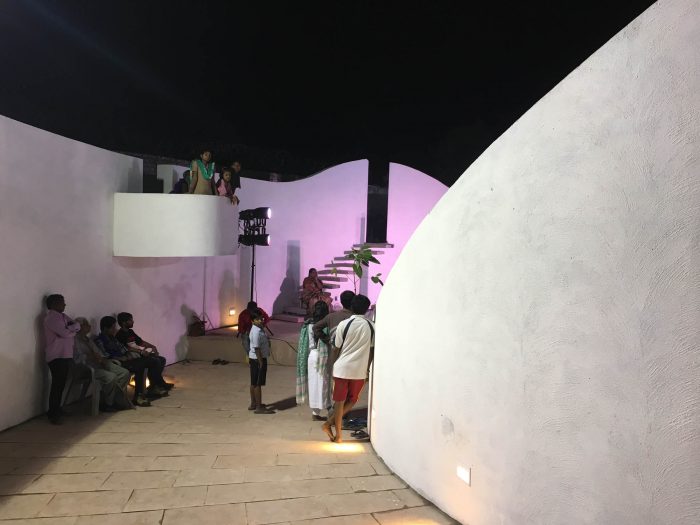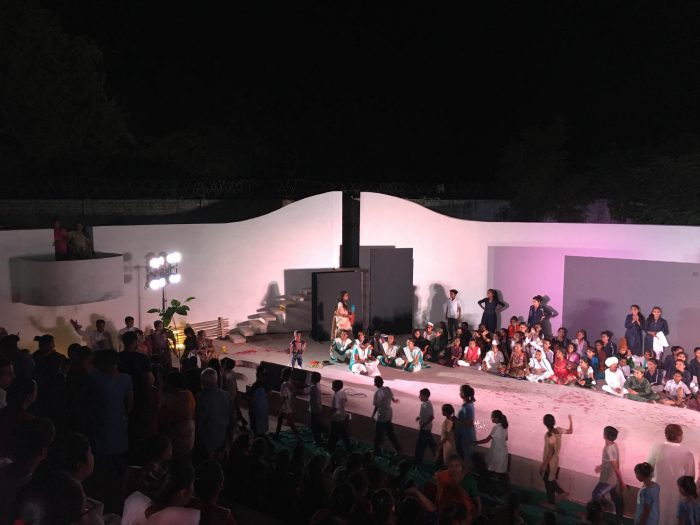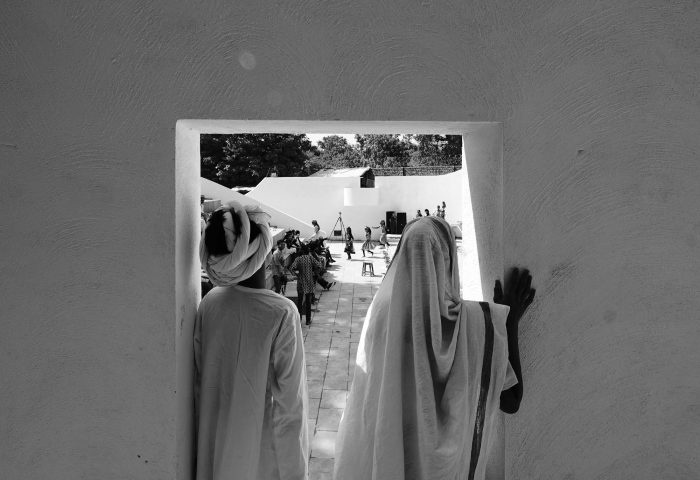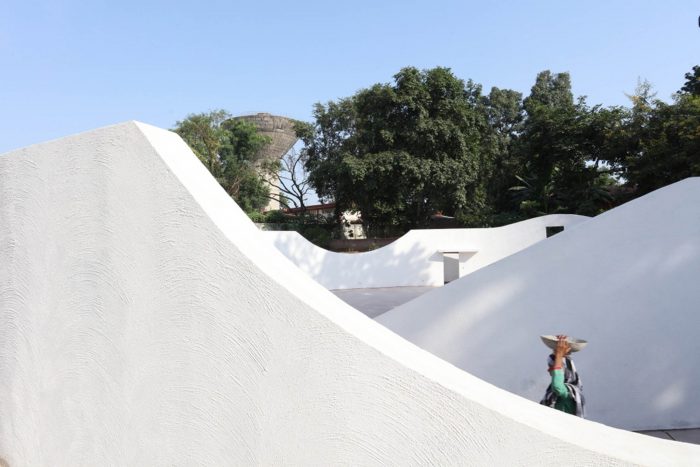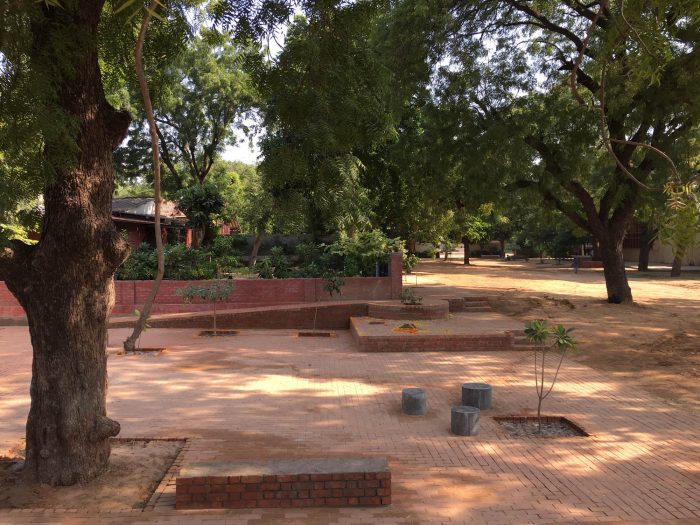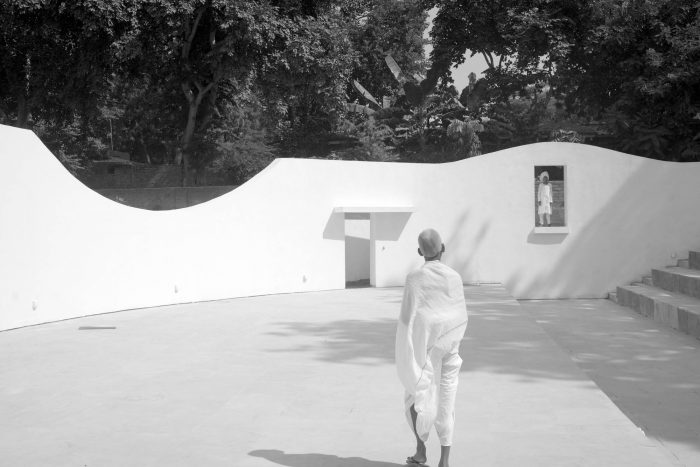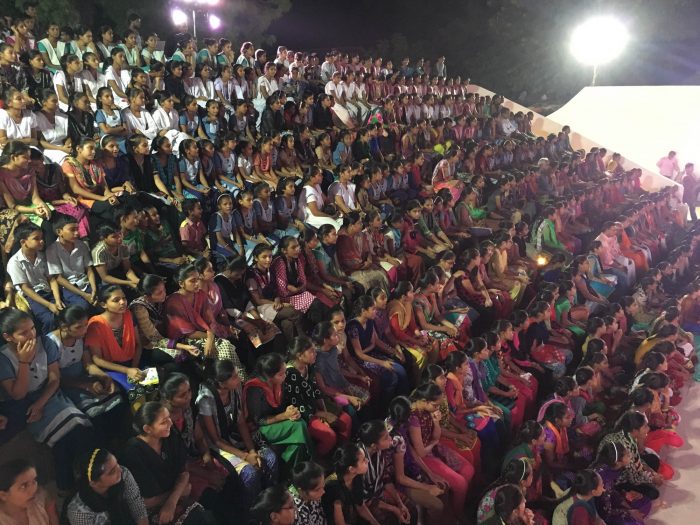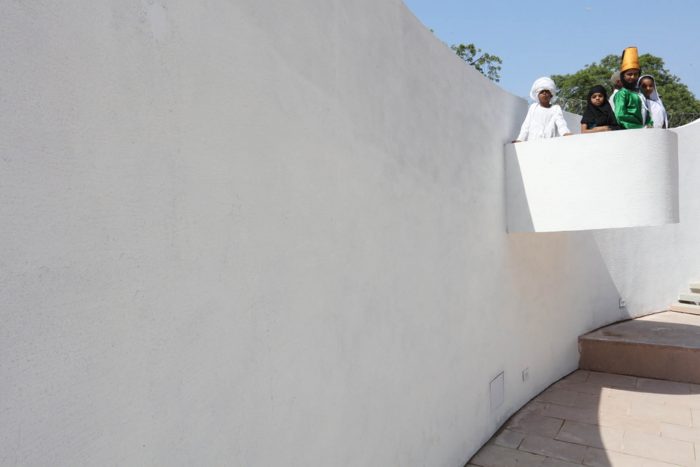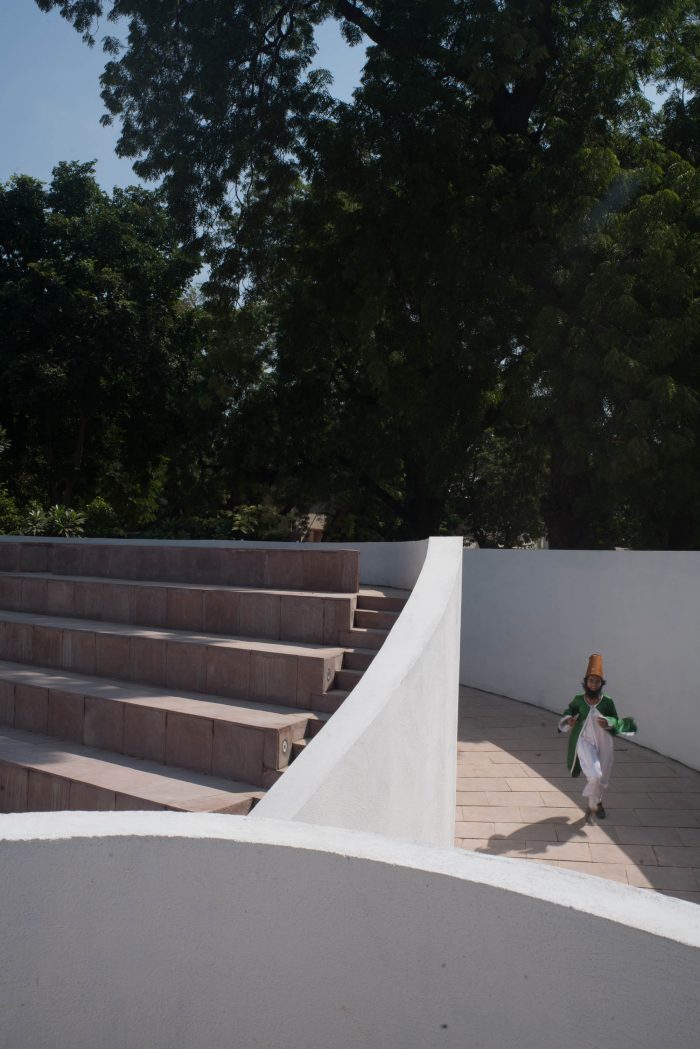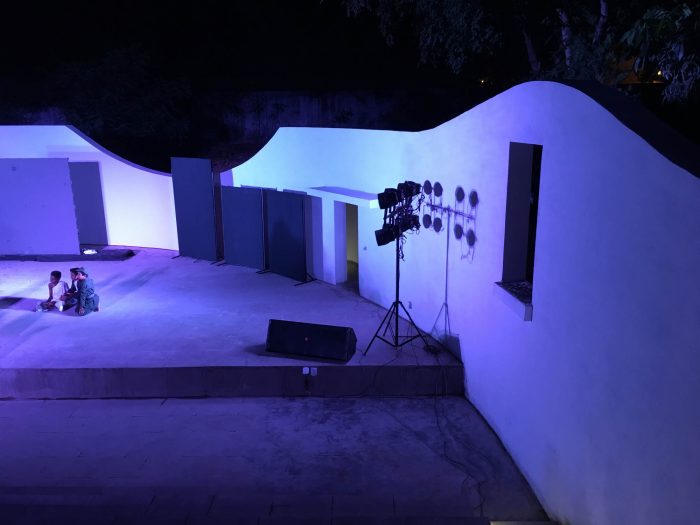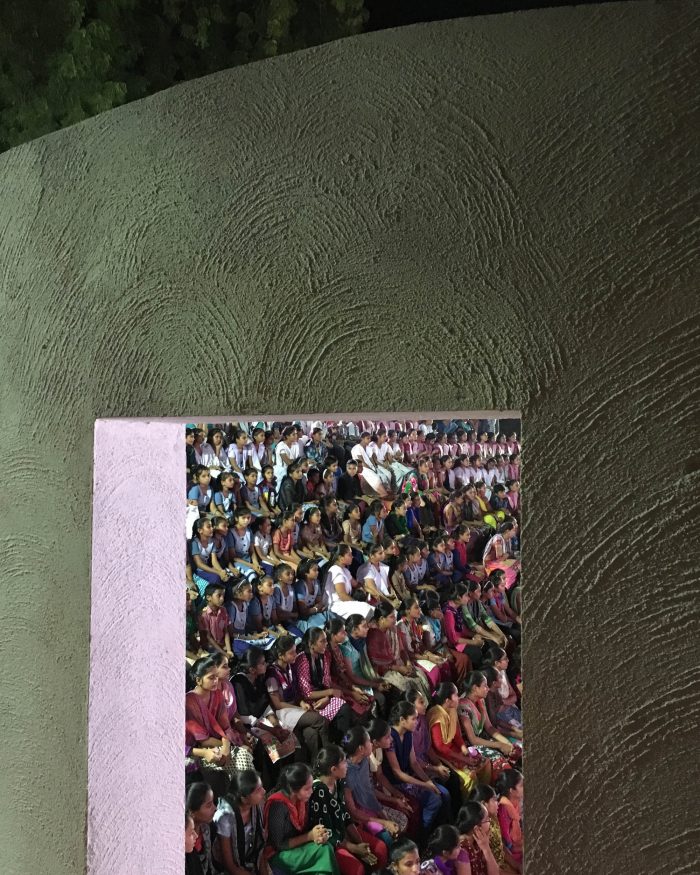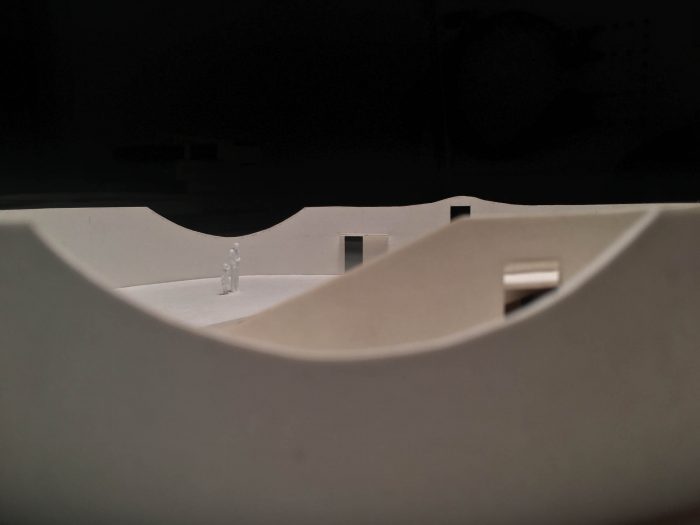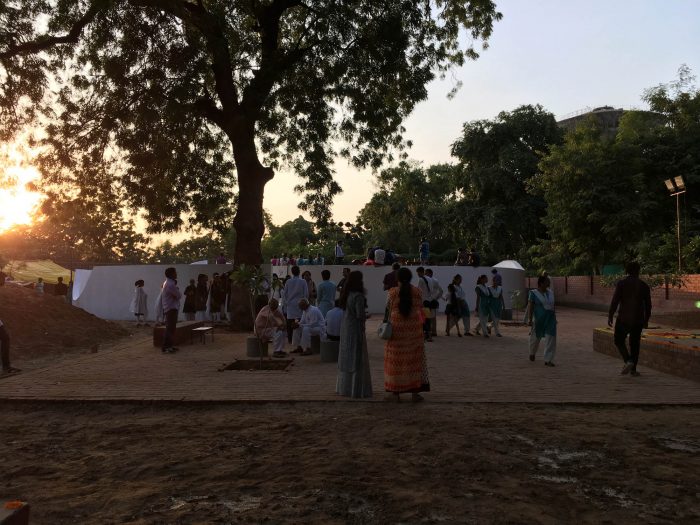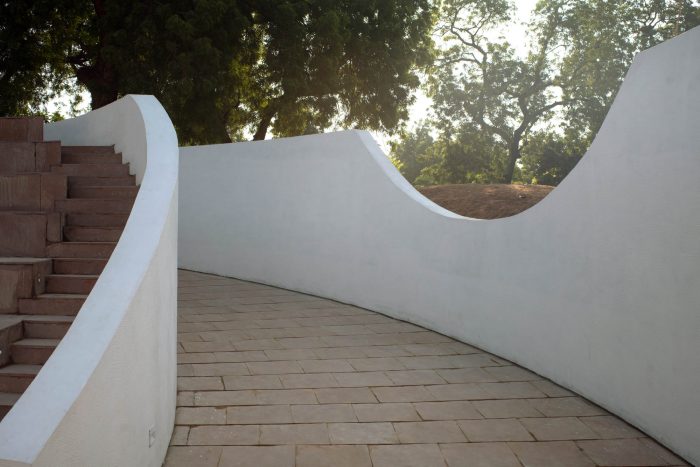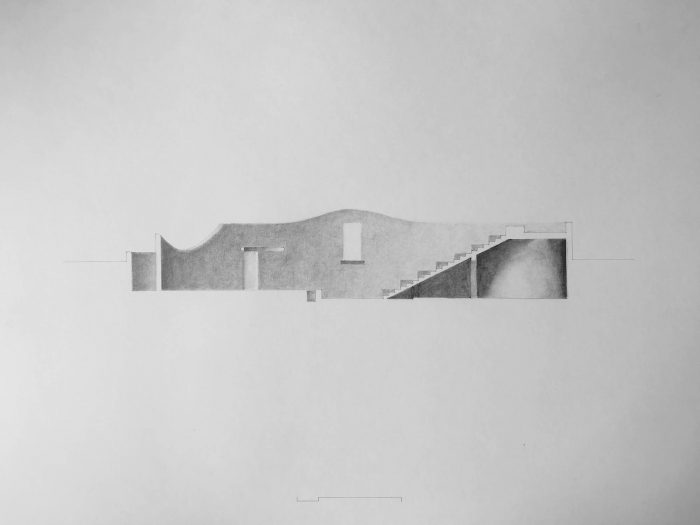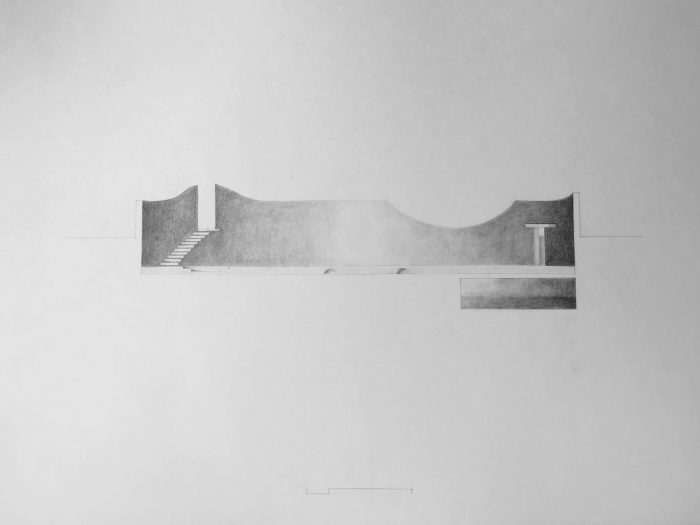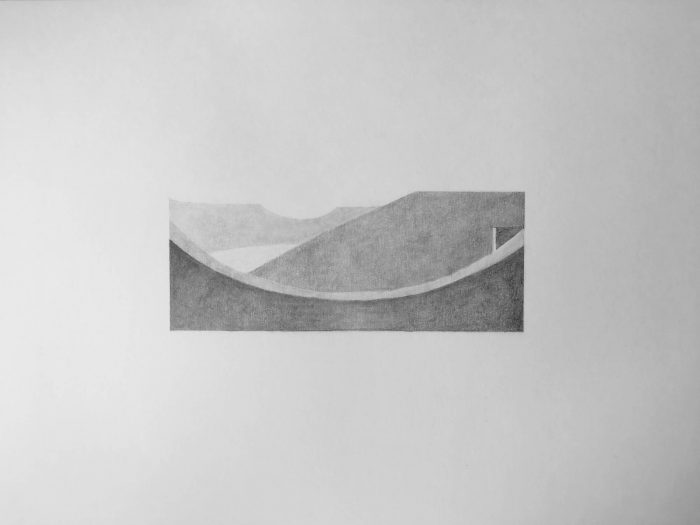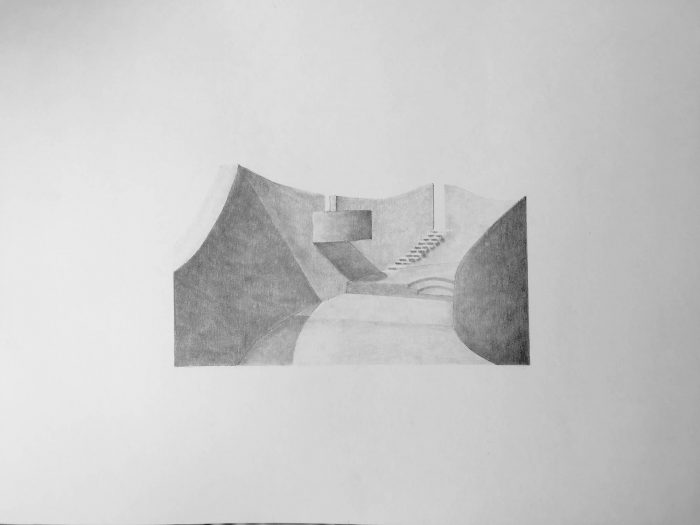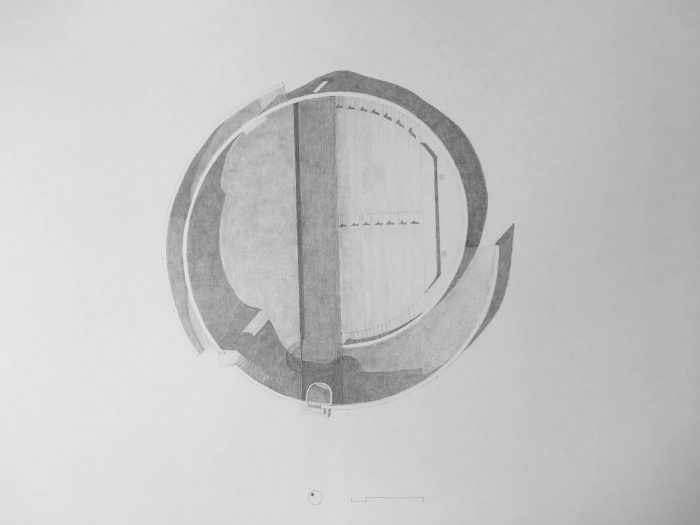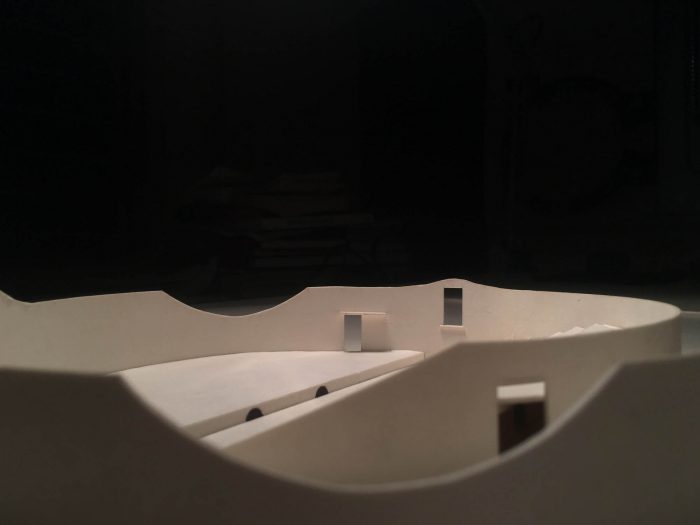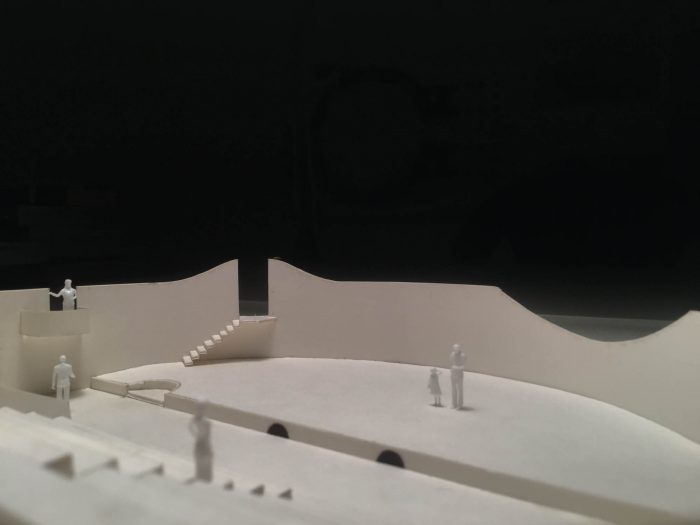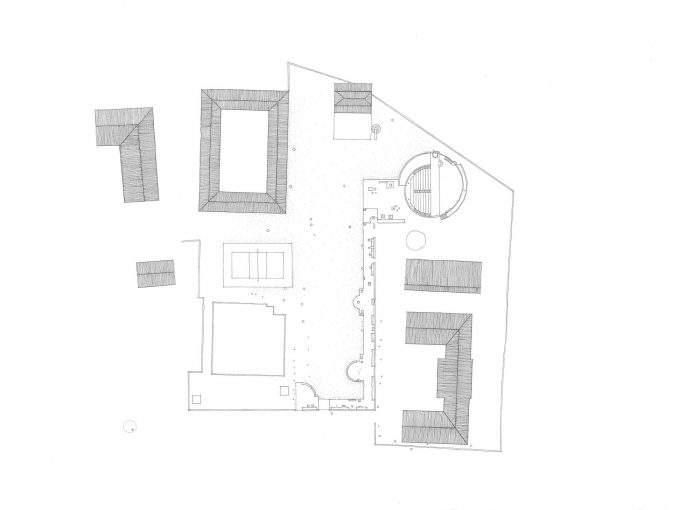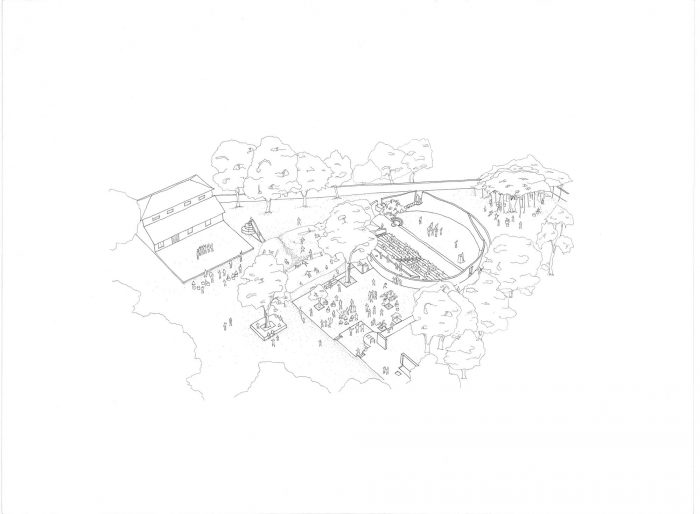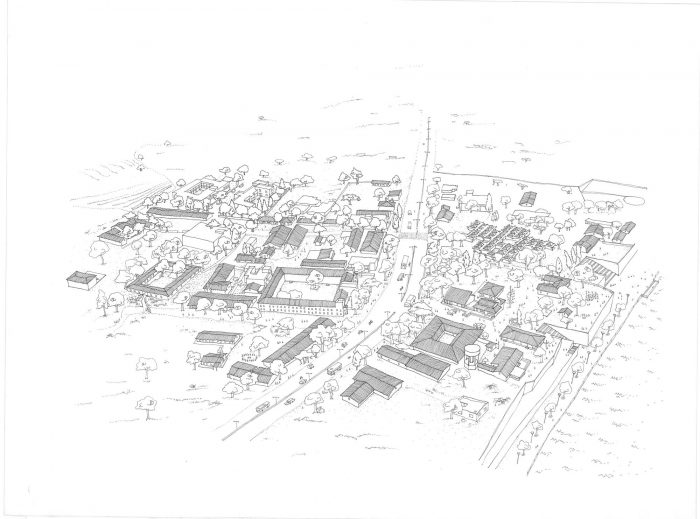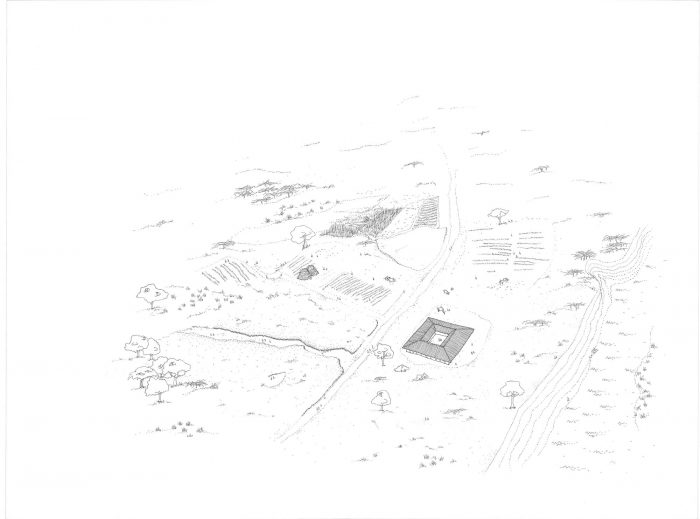Jai Jagat剧院的建设是作为Sabarmati Ashram 100周年庆祝活动的一部分而设想的。正是在1917年,甘地决定在这里建立他的社区生活,靠近Sabarmati河,在监狱和火葬场之间。从那时起,甘地对教育的强烈愿景在Ashram得到了实践–发展身体、思想和精神。今天,在Sabarmati Ashram生活或学习的1500名儿童仍然以同样的理念进行教育。
Jai Jagat theatre construction was envisioned as part of the celebration for the 100 years of Sabarmati Ashram. It was in 1917 that Gandhiji decided to establish his community living here, near the river Sabarmati, between a prison and a crematorium. Since then that Gandhiji’s strong vision on education was practiced at the Ashram – to develop body, mind, and spirit. The 1500 children that today live or study at Sabarmati Ashram are still taught with the same philosophy.
Jai Jagat剧院是这一教育理念的一部分;它为学生们提供了一个练习表演技巧的机会,在向公众讲话时获得自信,在小组中工作,遵守纪律并获得乐趣。和附近社区的孩子们一起,Sabarmati Ashram的学生们再也不用到城市的很远的地方去排练他们的戏剧了。Jai Jagat剧院现在是他们练习表演、做集体练习或玩游戏的地方。它是一个表达的地方。它是教育的一个里程碑,”它是儿童和人类在身体、思想和精神上最好的全面画像”(甘地)。
Jai Jagat theatre is part of this education philosophy; it provides the students with an opportunity to practice their performance skills, to gain confidence while addressing the public, to work in a group, to be disciplined and to have fun. Together with children from the nearby communities, the students of Sabarmati Ashram no longer have to travel to far places of the city to rehearse their plays. Jai Jagat theatre is now the place where they practice their performances, do group exercises, or play games. It is a place for expression. It is a landmark for an education that is “an all-round drawing of the best in child and man in body, mind, and spirit” (Gandhiji)
露天剧场所在的场地上有高大的楝树和简单的地面建筑。其中一座建筑是蒙特梭利学校。这所学校是在1936年左右,甘地在伦敦见到蒙台梭利夫人后,于1936年在萨巴马蒂修道院建立的。他对她的教育方法(以儿童为中心,注重儿童的全面发展)印象深刻,并决定在阿斯兰姆实施。这所学校工作了很多年,最近被改造成了艺术教育的工作室。建筑物周围的树木为该地区提供了阴凉,并容纳了令人难以置信的各种鸟类和其他动物,创造了一个非常特殊和宁静的环境。
The site where the amphitheater stands is marked by high neem trees and simple grounded buildings. One of these buildings is the Montessori school. This school was established at the Sabarmati ashram around 1936, after Gandhiji met Madam Montessori at London in 1931. He was impressed by her education method (child-oriented and focused on the development of the whole child) and decided to implement it at the ashram. The school worked for many years and it was recently converted to studios for arts’ education. The trees that surround the building provide shade to the area and house an incredible variety of birds and other animals, creating a very special and peaceful environment.
露天剧场的建筑(位于蒙特梭利学校旁边)旨在保持这个地方的精神。从外面看,剧场只是一面简单的白墙,规模适中的人性化。直到此时的路线是通过一条砖砌的小路,设计在现有的树木下面,并连接着修院的其他建筑,作为图书馆和学校。沿着小路,不同的壁龛邀请人们坐下来观察自然。更大的空间与座位区欢迎小型聚会或一起吃饭的暂停。这条小路慢慢地转变为一个更大的区域,一个广场,它预示着露天剧场,并成为一个门厅,一个活动或非正式排练的空间。剧院的入口是通过墙的两个时刻之间的空隙进入的,一条坡道将我们引向空间的中心。随着一个螺旋的运动,这面墙展开并环绕着舞台和观众,放置在地面以下的水平。周围的树木和元素,如学校或高高的水箱,仍然存在于剧场的内部,因为包含空间的墙壁起伏和开放,以创造朝向外部的视点。这面墙有不同的时刻和开口,它是有趣的,互动的,并且符合孩子们的尺度。它被认为是参与和加强了戏剧,成为场景的一部分,并为表演提供了不同的入口和出口点(朱丽叶阳台、楼梯或开口)。但它也是谦虚和沉默的,因此可以作为一个聚会、交谈或只是独处的地方。
The architecture of the amphitheater (located next to the Montessori school) aims to maintain the spirit of this place. From outside, the theatre is just a simple white wall with a modest humane scale. The route until this point is made through a brick pathway, designed below the existing trees and connecting other buildings of the ashram, as a library and a school. Along the pathway, the different niches invite people to sit and observe the nature. Bigger spaces with seating areas welcome small gatherings or a pause for eating together. This path slowly transforms into a larger area, a plaza, that anticipates the amphitheater and that becomes a foyer, a space for events or for informal rehearsals. The entry to the theatre is done through a gap between two moments of the wall and a ramp leads us down to the center of the space. With a movement of a spiral, this wall unfolds and surrounds the stage and the audience, placed at a level below ground. The surrounding trees and elements, like the school or a high water tank, are still present in the interior of the theatre because the wall that contains the space undulates and opens up to create points of view towards the outside. The wall has different moments and openings, it is fun, interactive and at the scale of the children. It was thought to participate and enhance the plays, to be part of the scenario and to provide different points of entry and exit to the shows (a Juliet balcony, stairs or an opening). But it is also modest and silent, and therefore can be used as a place to meet, to talk or to just be alone.
为了保持这里的宁静,不与周围的建筑相冲突,露天剧场被设计在地下一半(1,83米),与外墙高度的尺寸相同。由于它是埋在地下的,位于场地的最低层,所以在舞台下方设计了一个能收集7万升雨水的水箱。季风期间收集的水将用于灌溉剧院周围地区种植的许多土著树木。
To maintain the serenity of the place and to not compete with the surrounding buildings, the amphitheater was designed half below ground (1,83 m), the same dimension of the exterior wall height. Because it is buried and located in the lowest level of the site, a tank with the capacity to harvest 70 000 liters of rainwater was designed below the stage. The water collected during the monsoon will be used to irrigate the many indigenous trees that were planted in the area that surrounds the theatre.
Jai Jagat剧院于2017年10月2日(甘地生日)落成,由来自Sabarmati Ashram和附近社区的孩子们表演了关于甘地生平的节目。三百人(露天剧场的容量)欣赏了演出和空间。这是一个美妙的时刻,充满了欢乐。演出结束后,孩子们在舞台上跳舞庆祝。观众通过坡道缓缓离开剧场,漫步在小路上,聚集在座位上,回忆着演出,享受着萨巴玛蒂阿斯兰姆的这一宁静时刻。
Jai Jagat theatre was inaugurated on 2nd October 2017 (Gandhiji’s birthday) with a performance about the life of Gandhi, by children from Sabarmati Ashram and the neighboring communities. Three hundred people (the capacity of the amphitheater) enjoyed the show and space. It was a wonderful moment, full of joy. After the show, the children danced and celebrated on the stage. The audience slowly exited the theatre through the ramp and strolled the pathways, gathering on the seating areas, remembering the show, and enjoying this peaceful moment at Sabarmati Ashram.
建筑师:SEAlab
面积:392 m²
年份:2017年
照片:Dhrupad Shukla, Anand Sonecha, Anand Shukla, Ayush Gajjar
施工队:Viraben Keshva, Rakeshbhai Keshva, Payalben Keshva, Nileshbhai Keshwa, Neeta Keshwa, Ramilaben Vinodbhai, Krishnaben Sandipbhai, Kaliben Naresh, Punaben Mansingh, Dhanaben Mansingh, Pareshbhai Mansingh, Anuben Mansingh, Jamaben Mansingh, Kanubhai Pidhya, Keshav Bhavan
铺砖:Keshav Bhavan, Naresh Mansingh, Vinod
石膏:Sukhdev, Kiran
电气:Nilesh Patel、Lov Patel、Satish Patel
承包商:Vasant Prajapati, Sachin Patel
现场工程师:Ramesh Vel
顾问:Bhailalbhai Gajjar、Kshitij Gajjar、Rakesh Modi
客户:Sabarmati Harijan Ashram Trust, Ahmedabad
首席建筑师:Anand Sonecha
设计团队:Ayush Gajjar、Divyang Sharma、Nimo Patel、Mariana Paisana、Anand Sonecha
城市:Ahmedabad
国家:印度
Architects: SEAlab
Area: 392 m²
Year: 2017
Photographs: Dhrupad Shukla, Anand Sonecha, Anand Shukla, Ayush Gajjar
Construction Team:Viraben Keshva, Rakeshbhai Keshva, Payalben Keshva, Nileshbhai Keshwa, Neeta Keshwa, Ramilaben Vinodbhai, Krishnaben Sandipbhai, Kaliben Naresh, Punaben Mansingh, Dhanaben Mansingh, Pareshbhai Mansingh, Anuben Mansingh, Jamaben Mansingh, Kanubhai Pidhya, Keshav Bhavan
Brick Paving:Keshav Bhavan, Naresh Mansingh, Vinod
Plaster:Sukhdev, Kiran
Electrical:Nilesh Patel, Lov Patel, Satish Patel
Contractor:Vasant Prajapati, Sachin Patel
Site Engineer:Ramesh Vel
Consultants:Bhailalbhai Gajjar, Kshitij Gajjar, Rakesh Modi
Client:Sabarmati Harijan Ashram Trust, Ahmedabad
Lead Architects:Anand Sonecha
Design Team:Ayush Gajjar, Divyang Sharma, Nimo Patel, Mariana Paisana, Anand Sonecha
City:Ahmedabad
Country:India



